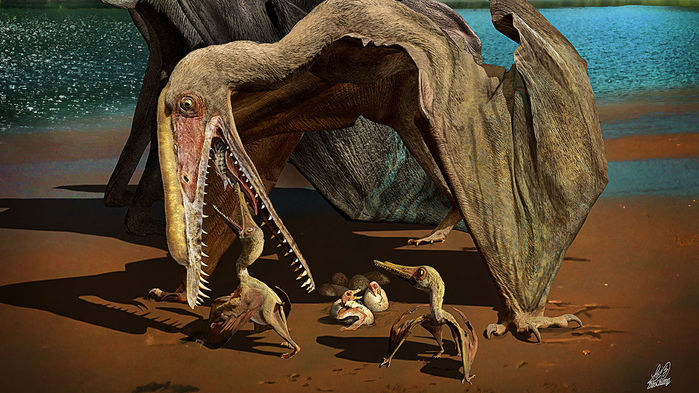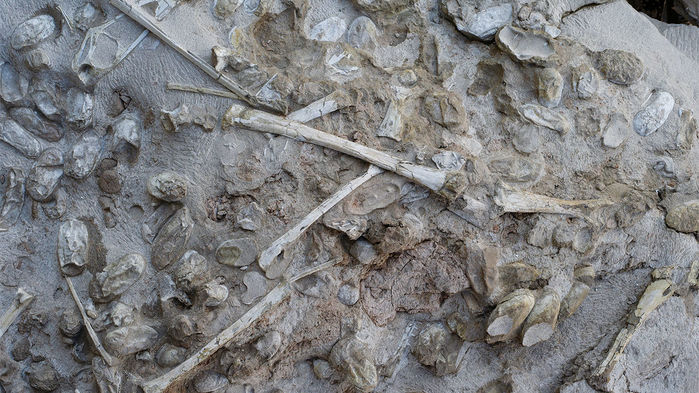
Only a few fossilized pterosaur eggs had turned up before, at sites in Argentina and in China. But in a paper published today in Science, Wang Xiaolin and Jiang Shunxing at the Chinese Academy of Sciences’s Institute of Vertebrate Paleontology and Paleoanthropology in Beijing and their colleagues report that a 3-meter square chunk of rock they excavated in the Turpan-Hami Basin in northwest China contains more than 200 eggs of the pterosaur, called Hamipterus tianshanensis. In 16 of them, researchers have been able to identify fossilized bones of developing embryos.
Whatever transported the eggs to their resting place likely damaged them, so the bones are jumbled and incomplete. But enough is preserved to allow comparisons between the bones in the embryos and those of older pterosaurs also preserved, says Alexander Kellner of the National Museum at the Federal University of Rio de Janeiro in Brazil, who helped analyze the fossils. “It’s amazing,” he says. “We never thought we would find so many eggs.”

This Chinese fossil contains hundreds of pterosaur eggs and bones.
The researchers used computerized tomography scans to measure some of the embryonic bones and took thin slices of some to tell how mature they were. In one particularly well preserved egg, the hind limbs were more developed than the forelimbs. That suggests, Kellner says, that pterosaurs could walk when they hatched, but not fly. The embryos also appeared to be toothless, unlike some dinosaur embryos. Together, the authors say, the evidence suggests that hatchlings might have not been able to hunt for themselves, relying on their parents to feed them. “They needed some sort of parental care,” Kellner says.
Unwin says he’s not yet convinced. The smallest hatchlings in the sample are 40% bigger than the embryos, he notes, so the forelimbs might have matured by the time they hatched. Charles Deeming, an expert on reptile reproduction at the University of Lincoln in the United Kingdom, also cautions about drawing firm conclusions from close analysis of just a few eggs. Although fossil egg finds are spectacular, he says, “one of the dangers … is that they are often overinterpreted.”
Jiang says that’s a fair critique, but he and others say further analysis of the wealth of eggs at the site will eventually provide firmer evidence one way or another. “The numbers [of eggs and bones] mean that we can move on from positing ideas to testing ideas,” Unwin says. Pterosaur remains scattered through multiple layers of the rocks suggest that the site was a pterosaur nesting site for many years. “It must have been a great place to bury eggs,” Unwin says—until, periodically, catastrophe struck. The specimen described today is only the start, Jiang says. “There are many more eggs.”(By Gretchen Vogel Nov. 30, 2017 , 2:00 PM)